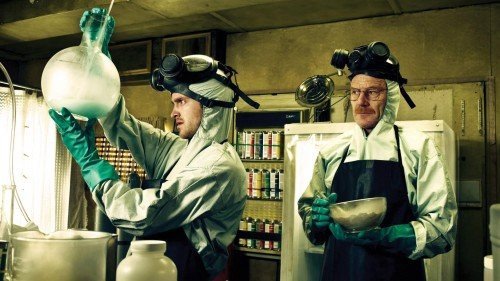HOW DOES FAT LEAVE THE BODY?
HOW DOES FAT LEAVE OUR BODY?
How does all that weight that you lose leave your body? This is a question that has stumped many wise minds. In fact, I encourage you to perform this simple survey yourself amongst your friends and family. Most will likely tell you that it passes through our body either in the form of sweat, urine or through our digestive tract. All decent guesses and not 100% wrong, more like just 84% wrong (but I’ll get to that later). I personally always just presumed that our fat was banished to live a life of purgatory where all unwanted things in our lives get dumped…BOKSBURG. But that might just be me.
Well, it turns out the truth is a little stranger than that. But before we get to that, we first need to brush up on some high school chemistry. There are 4 fundamental elements necessary for life on earth and that make up about 94% of the human body, namely Carbon (C), Hydrogen (H), Oxygen (O) and Nitrogen (N). Nitrogen is predominantly involved in the development of muscle, something most of us know nothing about. So, for the sake of our own sanity and pride we shall concentrate only on Carbon, Hydrogen and Oxygen. These 3 elements appear almost everywhere in life. Water = H2O; Carbon Dioxide = CO2; Sugar = C6H12O6. Human fat is also made up of these 3 elements and is usually arranged in the following combination = C55H104O6.
Alright stay with me hear, all you need to know is that human fat is made up of a complex combination of these 3 elements. And when enough energy is placed into a system that allows those fat molecules to react with Oxygen, such as during exercise, that fat is then broken down into the simpler compounds Carbon Dioxide (CO2) and Water (H2O).
The law of thermodynamics posits that energy cannot be created nor destroyed in an isolated system. And we also know that you cannot turn an atom into pure energy. The same number of atoms must exist in a closed system before a reaction as there are afterwards. This means that we cannot magically turn fat cells into kilojoules but must be broken down into another simpler structure that can then be expelled from the body. Thus, we have a breakdown of the fat cell from C55H104O6 to CO2 and H2O. Unfortunately, we cannot visibly see Carbon Dioxide exiting our body. Nor do we perceive its weight either since its natural state is as a gas and it only turns solid at −78.5 °C. However, it would be more accurate to say that our bodies are actually losing CO2 and H2O molecules instead of losing fat per se.
A quick perusal of the periodic table, observing the atomic mass units of Carbon, Hydrogen and Oxygen, will tell you that for every 10kg’s of fat that we lose, a massive 84% (8.4kg’s) of that is lost in the form of CO2 with only 16% (1.6kg’s) in the form of H2O (ie. through sweat, urine & digestion).
Now I know what you’re thinking. You’re asking yourself “will breathing heavier help me lose weight quicker?” Sadly, no. As mentioned previously, first we need to trigger the release of those fat cells from our adipose tissue through movement (exercise) or through ketosis and breathing heavy will just leave you lightheaded. However, once that reaction has been triggered the fat will stream out of your mouth as inconspicuously and as listlessly as it came in.
In the famous words of cinematic anti-hero Jesse Pinkman, “Science B*tch!”.
First published 27 January 2022
Written by Kuda Ngulube
Textbooks:
Allen, L. and Prentice, A. (2005) Encyclopaedia of Human Nutrition. Netherlands. Elsevier.
Guyton, A. and Hall, J. (2015) Textbook of Medical Physiology. London. WB Saunders.
Kang, J. (2013) Nutrition and Metabolism in Sports, Exercise and Health. London. Routledge.
Novels:
Berg, E. (2010) The 7 Principles of Fat Burning: Get Healthy, Lose Weight and Keep It Off. Illinois. KB Publishing.
Berry, K. (2019) Lies My Doctor Told Me: Medical Myths That Can Harm Your Health. Nevada. Victory Belt Publishing.
Ferriss, T. (2011) The 4-Hour Body: An Uncommon Guide to Rapid Fat-loss, Incredible Sex and Becoming Superhuman. New York. Penguin Random House.
Fung, J. (2016) The Obesity Code: The Bestselling Guide to Unlocking the Secrets of Weight Loss. Melbourne. Scribe Publications.
Goldacre, B. and Farley, R. (2010) Bad Science. London. Fourth Estate.
Greene, R. (2018) The Laws of Human Nature. London. Profile Books.
Harari, Y. (2011) Sapiens: A Brief History of Humankind. New York. Penguin Random House.
Noakes, T. (2017) Lore of Nutrition: Challenging Conventional Dietary Beliefs. Cape Town. Penguin Random House.
Pollan, M. (2007) The Omnivore’s Dilemma: A Natural History of Four Meals. London. Penguin Publishing Group.
Taubes, G. (2016) The Case Against Sugar. California. Portobello Books.
Volek, J. and Phinney, S. (2011) The Art and Science of Low Carbohydrate Living. Connecticut. Beyond Obesity LLC.
Wilson, J. and Lowery, R. (2017) The Ketogenic Bible: The Authoritative Guide to Ketosis. New York. Simon & Schuster.
Courses:
Nowicki, S. (2004) The Great Courses — Biology: The Science of Life. Duke University.
Shaw Academy (2018) — Sports & Nutrition Certification Course
YouTube:
The Mathematics of Weight Loss | Ruben Meerman | TEDxQUT — https://www.youtube.com/watch?v=vuIlsN32WaE&t=32s.
